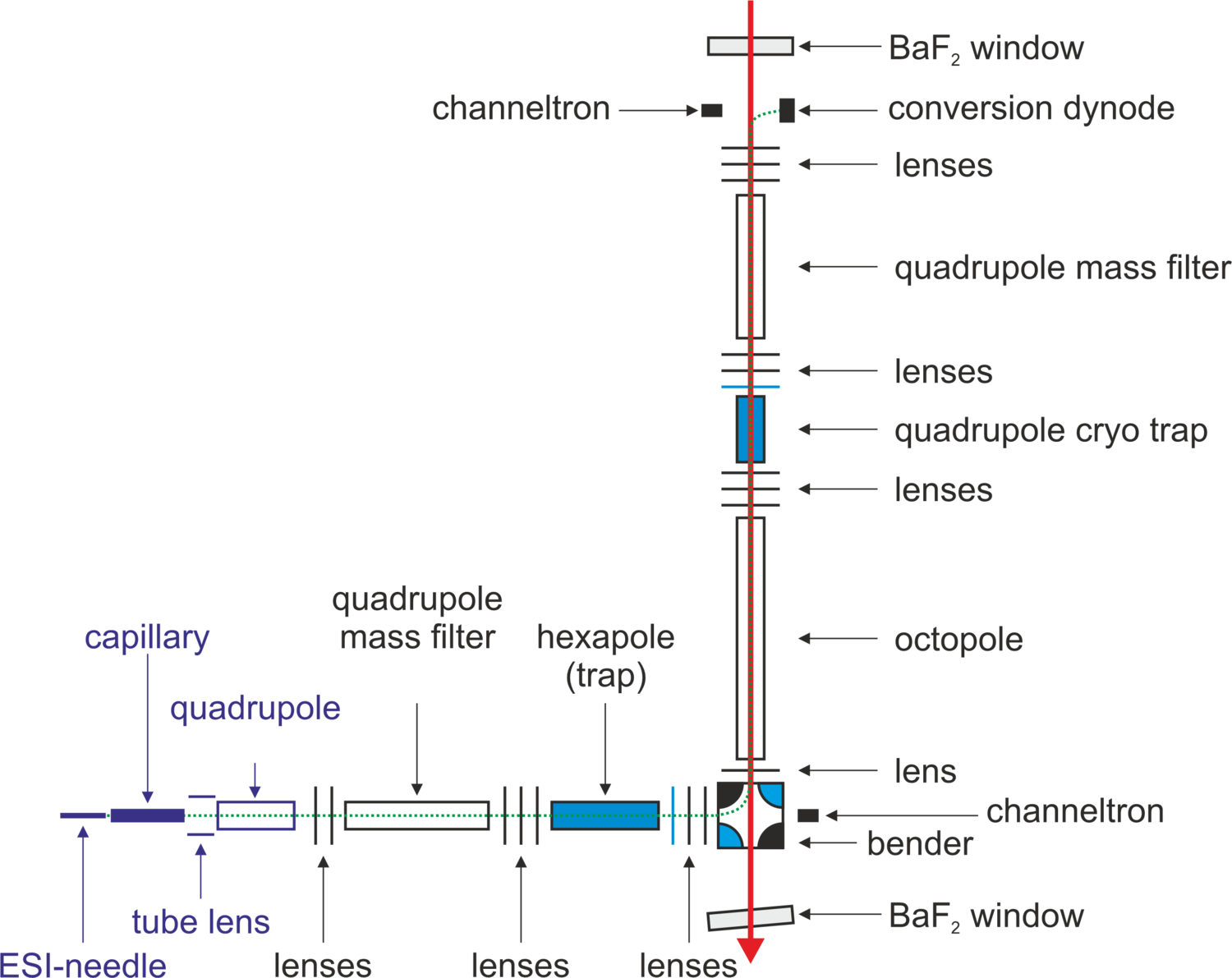Absorption spectra of gas-phase ions via helium-tagging
The absorptions of molecules in the solid state, in solution or in matrix are influenced by the respective environment. However, to be experimentally as close as possible to quantum chemical calculations, measurements in the gas-phase are essential. This is made possible by the newly built He-TAG instrument for cryogenic gas-phase action spectroscopy. In addition to benchmarks for theory, this measurement method also offers the possibility to compare molecular absorptions in the laboratory with the light absorptions of the interstellar medium, the so-called Diffuse Interstellar Bands, in order to draw conclusions about the existence of ions in space. It also becomes possible to observe experimentally in detail the influence in the adaptation of ligands in a complex, to ultimately support synthesists in the targeted preparation of complexes.
In the method used here, ions are first produced in an ESI or EI source, then mass-selected and stored. In the cryogenic quadrupole trap (2.3 K wall temperature), the ions collide with helium, forming corresponding complexes (M..Hen+/-). By irradiating these ions through a tunable laser system, the extremely lightly bound helium complexes will dissociate if there is absorption at this wavelength. Following the irradiation, the ions are ejected from the trap and pass a second mass selection. Absorptions correspond to a reduction of the number of helium complexes.
As a tag, helium offers the advantage that it hardly affects the absorptions and is easy to remove.
Dmitry Strelnikov, Dieter Gerlich, Holger Halberstadt, Klaus Stree, Alexander Schäfer and the precision engineering workshop of the IPC played a major role in the construction of the system.

